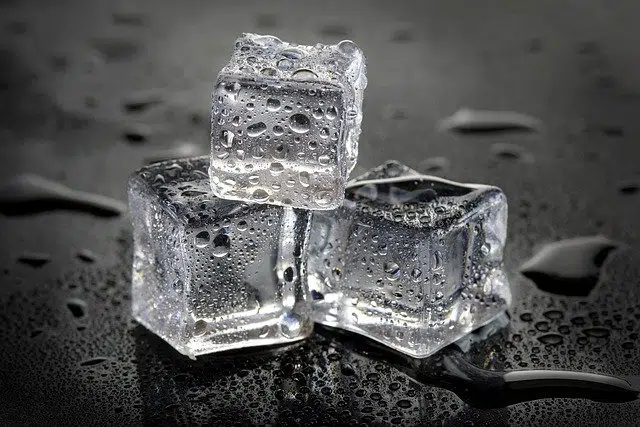
The freezing point of a substance is the temperature at which it changes from a liquid to a solid state.
The freezing point , also called freezing point , is the temperature at which a substance in a liquid state becomes a solid state . In other words: the freezing point is the moment at which a liquid solidifies .
In the case of pure water ( H2O ), the freezing point is 0 °C . This means that, as long as it is at a temperature above 0ºC and below 100ºC (since that is its boiling point ), the water will be in a liquid state. If the temperature drops below 0ºC , the water will freeze and become a solid (ice).
The case of water
Continuing with the example of water , always taking the theoretical values (since in practice the processes can occur at other temperatures), we can see how a substance changes state according to different points.
Let's take water at an ambient temperature of 20 °C : water will be a liquid. If the liquid is subjected to a cooling process , when it reaches 0 °C it will reach its freezing point and become a solid. On the other hand, if you start heating the water from 20ºC , when it reaches 100ºC it will reach its boiling point and will transform into steam .
Although this value, 0 °C, is in effect the freezing point of water, this is only true if atmospheric pressure conditions are normal and if the water does not contain a certain degree of impurities. If these impurities exist, then it is necessary to ensure that they freeze, forming small ice seeds or nuclei so that they collaborate with the freezing of the liquid. A water simulation study by researchers H. Eugene Stanley and Pradeep Kumar revealed that in some cases the freezing point can be lower than 47 degrees Celsius below zero , a huge difference from the traditional value mentioned above.

The freezing point of water is 0° C.
Freezing point and molality
If we analyze the freezing point of a solution (for example, seawater, which is water with salt), it will depend on the type of solvent and the molality of the solute in the solvent in question. The higher the molality, the lower the freezing point.
Molality, for its part, is expressed with the letter m and is the number of moles of solute found in one kilo of solvent. When preparation of solutions of a particular molality is required, it may be carried out in a beaker (a cylinder-shaped container frequently used in the laboratory, especially for heating or preparing substances, and also for transfer of liquids) and use an analytical balance to weigh it, without forgetting to write down the weight of the glass before pouring the substance to find the exact value.
In the case of molarity, a concept that is sometimes confused with this simply due to its orthographic similarity, the preparation of a solution requires the use of a volumetric flask (volumetric material used to measure the volume of a liquid according to the capacity of the flask itself; it has a narrow and high neck, which increases the accuracy of the measurements).
Continuing with molality, which directly affects the freezing point of certain solutions, the greatest benefit it provides as a measurement method is that it does not depend on pressure or temperature, since it is not a function of volume, and allows a calculation more precise than others. The reason is that the temperature and pressure of a solution determine the volume, and that is why it changes if the former do so.
